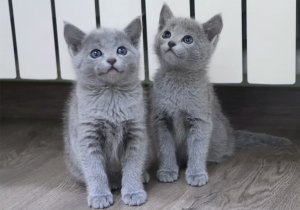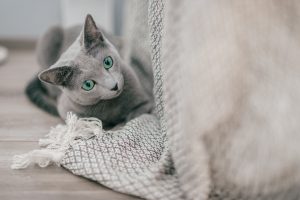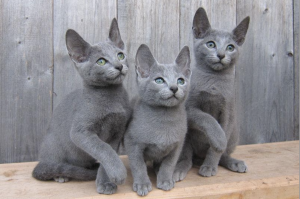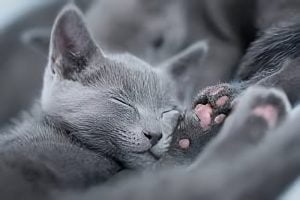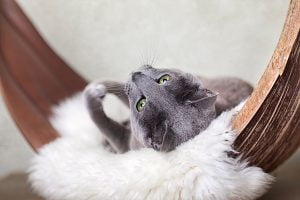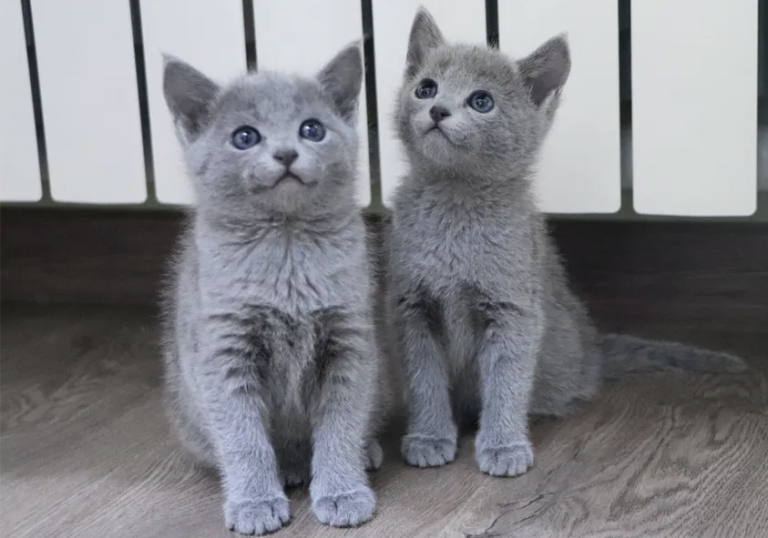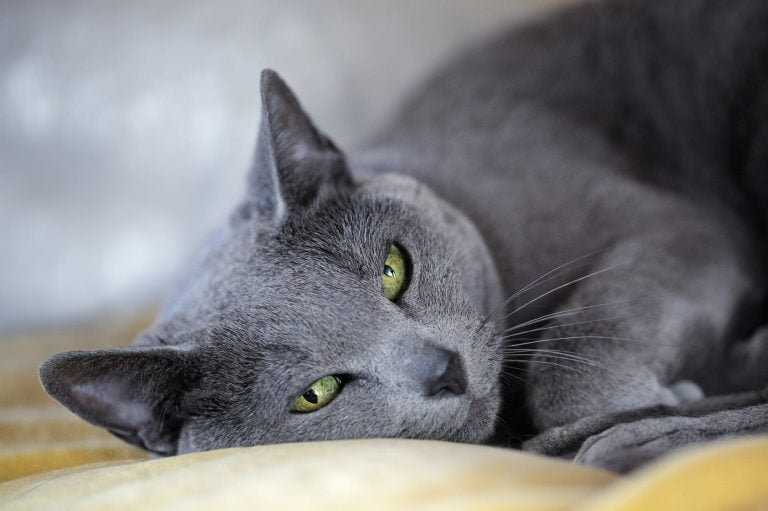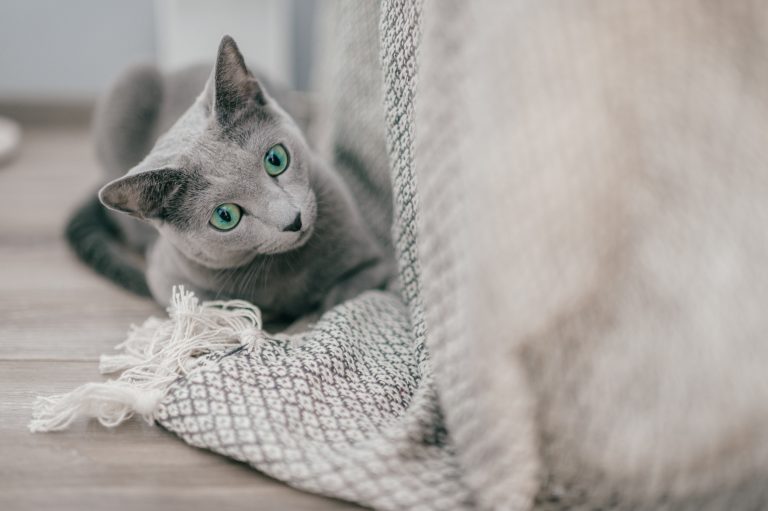Welcome, dear cat enthusiasts and curious readers alike! Today, we delve into the captivating world of the Russian Blue cat breed, known for its striking appearance and captivating personality. As we explore this magnificent feline, one intriguing question stands out: Is the Russian Blue a one-person cat? In this article, we aim to unravel this mystery and provide you with all the insights you need to better understand these incredible animals.
What Does It Mean To Be a One-Person Cat?
The term “one-person cat” refers to a feline that forms a strong, unique bond with a single individual, often displaying a level of loyalty and devotion that may not be as apparent with other family members or pets. A one-person cat may seek out the company of their chosen person, follow them around the house, and show a preference for their attention over that of others. This phenomenon is intriguing to many cat lovers, as it suggests a level of emotional depth that is not often associated with our feline friends.
While some believe that Russian Blues possess this trait, others argue that it is a myth or an overgeneralization. As we embark on our journey to uncover the truth, we will delve into the factors that may contribute to this phenomenon and compare the Russian Blue’s bonding tendencies with those of other breeds.

Examples of One-Person Cat Behavior in Russian Blues
There are numerous anecdotal accounts of Russian Blue cats displaying one-person cat behavior. Owners have reported their Russian Blues exhibiting strong attachment to one family member, often seeking their company, sitting on their lap, and even expressing distress when separated from that individual. In some cases, these cats may seem indifferent or aloof towards other household members, further reinforcing the idea that they have chosen a “favorite” person.
It’s important to note, however, that not all Russian Blues exhibit this behavior, and some may form bonds with multiple people in the household. This variability suggests that there may be additional factors at play when it comes to the development of the one-person cat phenomenon.
Factors Contributing to the Development of a One-Person Cat
There are several factors that may contribute to the development of one-person cat behavior in Russian Blues, or any other breed for that matter. These factors can include:
Early socialization: Cats that have limited exposure to people during their formative weeks and months may be more likely to form strong bonds with one individual, as they haven’t had the opportunity to develop relationships with a variety of people.
Personality traits: Just as humans have unique personalities, so do cats. Some cats may be naturally more inclined to form deep attachments to a single person, while others may be more sociable and open to bonding with multiple individuals.
Owner behavior: The way an owner interacts with their cat can play a significant role in the development of one-person cat behavior. If a specific person is the primary caregiver, providing food, play, and affection, the cat may be more likely to form a strong bond with that individual.
Environmental factors: The living environment can also influence a cat’s bonding tendencies. In households where one person spends more time at home, a cat may be more inclined to form a strong attachment to that person simply due to their increased availability.
As we can see, there is no one-size-fits-all explanation for the one-person cat phenomenon. It is essential to consider the interplay of these factors when evaluating the behavior of a Russian Blue or any other cat breed.

Comparing Russian Blues to Other Cat Breeds
While the Russian Blue is often associated with the one-person cat phenomenon, it’s important to recognize that other breeds may display similar bonding patterns. In general, cats have a wide range of temperaments, from sociable and outgoing to shy and reserved. Some breeds, like the Siamese or the Sphynx, are known for being affectionate and social, often forming strong bonds with multiple people in a household. Others, like the British Shorthair or the Maine Coon, tend to be more independent and may not form as deep of an attachment to a single individual.
The Russian Blue falls somewhere in between, with a temperament that combines both affectionate and reserved qualities. While they may be more likely to form a strong bond with a single person, this is not a guarantee, and individual personalities play a significant role in their bonding behavior.
Building a Strong Bond with a Russian Blue
To build a strong bond with your Russian Blue, it’s essential to create a positive environment that fosters trust, comfort, and security. Here are some tips to help you achieve this:
Provide a safe and comfortable space: Ensure your Russian Blue has a quiet, cozy spot to call their own, complete with a comfortable bed, scratching post, and hiding spots. This will help them feel secure and relaxed in their surroundings.
Offer mental and physical stimulation: Engage your Russian Blue in play sessions with interactive toys that mimic prey and encourage hunting instincts. This will not only keep them entertained but also help strengthen your bond through shared activities.
Establish a routine: Cats thrive on routine, so try to keep feeding, playtime, and grooming consistent. This predictability will help your Russian Blue feel secure and build trust in your relationship.
Establishing trust and maintaining a healthy relationship
Building trust and maintaining a healthy relationship with your Russian Blue is vital for fostering a strong bond. Here are some ways to establish and maintain trust:
Be patient: Russian Blues can be reserved with new people, so give them time to adjust and get to know you. Allow them to approach you on their terms and avoid forcing interactions.
Use positive reinforcement: Reward your cat with praise, treats, or affection when they display desired behaviors. This will encourage them to trust you and strengthen your bond.
Communicate with your cat: Learn to understand your Russian Blue’s body language and vocalizations, and respond to their needs and preferences. This will show them that you respect their boundaries and are in tune with their feelings.
Regular grooming and healthcare: Groom your Russian Blue regularly and ensure they receive proper healthcare, including regular vet visits. This demonstrates that you care for their well-being and can help reinforce trust.
Encouraging socialization with multiple people
If you want your Russian Blue to form bonds with multiple people in your household, it’s essential to encourage socialization from an early age. Here are some tips to promote socialization with various individuals:
Involve everyone in the cat’s care: Encourage all family members to participate in feeding, playtime, grooming, and other aspects of the cat’s care. This will help your Russian Blue associate positive experiences with each person and increase their comfort level with multiple people.
Expose your cat to different people: Introduce your Russian Blue to friends and family members in a controlled and relaxed environment. This will help them become more accustomed to new faces and experiences.
Use treats and playtime as incentives: Encourage family members to engage your Russian Blue in play sessions or offer treats as a reward. This will help create positive associations with different people and promote bonding.
By creating a positive environment, establishing trust, and encouraging socialization, you can build a strong bond with your Russian Blue and help them feel comfortable and secure in your home, regardless of whether they display one-person cat behavior or form bonds with multiple people.
Conclusion
In conclusion, Russian Blue cats are beloved by cat owners all over the world for their striking appearance, intelligence, playfulness, and affectionate nature. While they may be more likely to form a strong bond with one particular person, they are not necessarily “one person cats” and can be friendly and sociable with everyone they meet. Russian Blues are gentle, loyal, and intelligent cats that make wonderful pets for families and individuals alike.
If you are considering adopting a Russian Blue cat, it’s important to do your research and find a reputable breeder or rescue organization. Make sure you have the time, space, and resources to care for a pet, and be prepared to provide plenty of love, attention, and stimulation for your furry companion.
If you already own a Russian Blue cat, congratulations! You have a wonderful and unique pet that is sure to bring you joy and happiness for many years to come. Remember to continue providing your cat with plenty of love, affection, and playtime, and make sure to monitor their health and well-being regularly.

